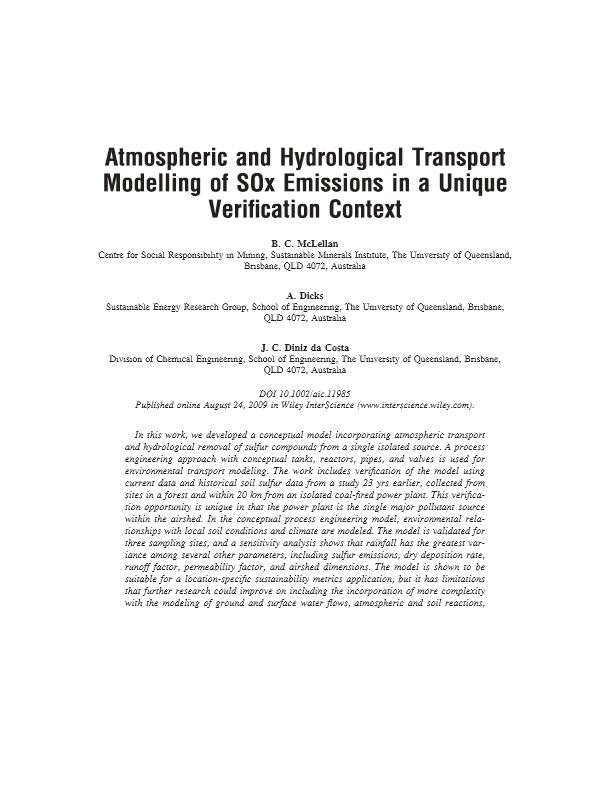Atmospheric and hydrological transport modelling of SOx emissions in a unique verification context
In this work, the authors developed a conceptual model incorporating atmospheric transport and hydrological removal of sulfur compounds from a single isolated source. A process engineering approach with conceptual tanks, reactors, pipes, and valves is used for environmental transport modeling. The work includes verification of the model using current data and historical soil sulfur data from a study 23 yrs earlier, collected from sites in a forest and within 20 km from an isolated coal-fired power plant. This verification opportunity is unique in that the power plant is the single major pollutant source within the airshed. In the conceptual process engineering model, environmental relationships with local soil conditions and climate are modeled. The model is validated for three sampling sites, and a sensitivity analysis shows that rainfall has the greatest variance among several other parameters, including sulfur emissions, dry deposition rate, runoff factor, permeability factor, and airshed dimensions. The model is shown to be suitable for a location-specific sustainability metrics application, but it has limitations that further research could improve on including the incorporation of more complexity with the modeling of ground and surface water flows, atmospheric and soil reactions, and vegetation effects.
Publisher: AIChE Journal
CITATION
McLellan, B. C., Dicks, A. and Diniz da Costa, J. C. (2010) Atmospheric and hydrological transport modelling of SOx emissions in a unique verification context. AIChE Journal, 56 3: 815-824

